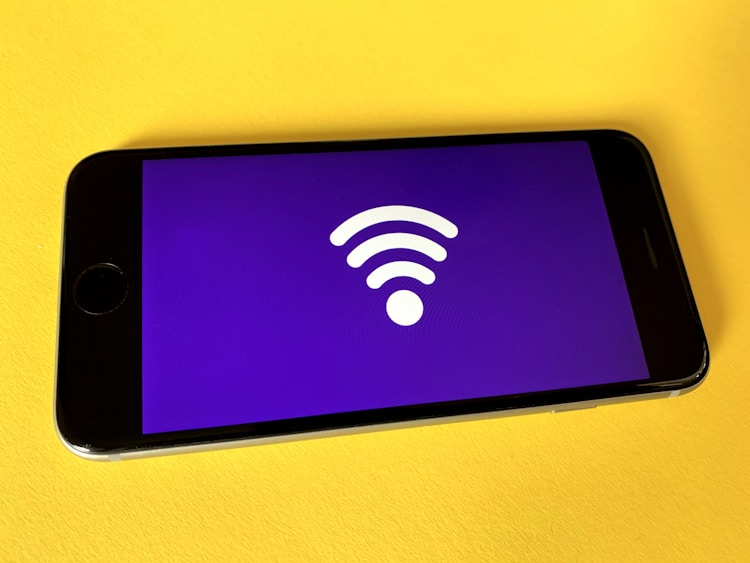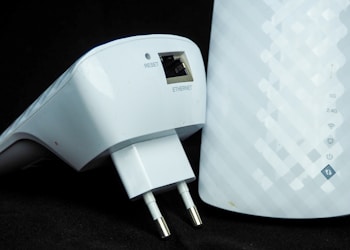We’ve all suffered from a loss of Wi-Fi signal at some point in our lives, especially when we live in a big house. It was in the quest to solve this very common problem that Signal Extenders emerged! Similar to an outlet, this small object allows you to boost your home signal to a specific location of your choice. Despite being small, it still generates great doubts about its installation. So don’t delay and check out our step-by-step guide on how to install a WiFi repeater quickly and easily.
WiFi Extender and WiFi Repeater
The WiFi amplifier or repeater is ideal for those who need to take the internet to environments where the signal does not reach efficiently or sometimes does not reach. This is because the amplifier is a tool capable of amplifying the internet signal and overcoming some physical barriers (such as distance between rooms and thicker walls) or the intense use of the signal by several people.
One of its characteristics is to maintain the original network, which guarantees a complete connection with the broadband internet package contracted by the user. The device is easy to set up and does not need a wired connection. WiFi repeaters, boosters, and extenders are pretty much the same thing devices to improve WiFi coverage area. Even if you don’t find a clear difference between “repeaters” and “extenders”, not all of them will work the same.
WiFi repeater
WiFi repeaters are devices that receive the wireless signal and retransmit it. If the Wi-Fi signal doesn’t reach certain points in your home or office, try a wireless repeater to boost the signal from your main router. A Wi-Fi repeater has two wireless routers, similar to the wireless router you already have in your home or office.
One of the routers takes the Wi-Fi connection you have and sends the signal to another which in turn produces the amplified signal. Repeaters are intended to retain the original network name. These devices are easy to set up and don’t need wires to hang around. Repeaters can sometimes experience interference, which can result in an unstable connection.
Did you know that there are weather-resistant WiFi repeaters? They are very useful if you want to amplify the signal outside the premises, for example, for the kiosk of the swimming pool of your house. None of the WiFi repeaters are ideal. They have some issues with loss of speed – some more, some less.
Repeaters can be single-band and dual-band. Devices of the first type receive and then retransmit each data packet over the same Wi-Fi channel, which can easily cause up to 50% bandwidth loss. Dual-band repeaters get around this problem by having the router working on one band while the WiFi signal is sent on the other.
Wi-Fi extender (AP mode)
An extender intercepts the WiFi signal from your router/switch, amplifies it, and rebroadcasts it. You can run a wire from the main router to the place where you want the network signal and then connect your WiFi Extender. This way, the main router will send the network signal through the wire to the extender. The latter will receive a new WiFi name.
This plug-and-go solution is quick and easy to set up and offers the fast connection you want. Already an extender that uses the WiFi network, instead of a wire, can cause some loss of speed. If your extender communicates with devices over the same band it uses to communicate with the router, there will be a drop in speed. For powerline Ethernet adapters, the distance between outlets, as well as the type of cable used, can impact overall performance. A WiFi repeater is an alternative to a powerline Ethernet adapter.
What types of wifi extenders are there?
There are many brands and models on the market. There is a simple way to classify wifi boosters and that is based on security. It is always necessary to analyze the level of confidence that one of these devices gives us. Here is the security ranking (from lowest to highest):
- Open network without encryption
- WEP
- WPA + TKIP
- WPA + TKIP/AES
- WPA + AES
- WPA2 + AES
Finally, it is important to say that the most common standard among routers is WPA + AES. Therefore, it will be vitally important that our future drivers be similar. It is important to analyze with your operator, such as satellite internet providers, which would be the most suitable model, to ensure the best operation.
How does a wifi extender work?
For a wifi signal booster to work properly, you need to know how it works. In this way, we will be able to take advantage of its full potential and know where to position it. The WiFi extenders are connected to the electrical system. This item takes the wifi signal it receives and multiplies its power. Consequently, it is necessary to take into account the proximity to the router. Closer proximity and less interference with the router will achieve better performance.
Why install a wifi extender?
We live in a world where connectivity is everything. Your concrete walls or distance from the router need not stop you. From working anywhere in your home to playing in the quietest rooms, the wide internet access will allow you to work from anywhere in your home. Wifi boosters also have several advantages over similar items.
For one, they don’t need cables, nor are they limited by the number of devices they can access. On the other hand, they provide connectivity for cell phones and tablets. Something that would be impossible with Ethernet cables. Below, we have listed some of the benefits:
- They give access to an unlimited number of devices;
- They do not necessarily require a reinforced electrical system;
- They can be connected at any point where the wifi signal reaches;
- They can give internet to both tablets and cell phones.
Where to install a wifi extender?
There is no single answer to this question. However, we can give you some certainties. On the one hand, you must position your wifi signal booster within range of your router. Just before the signal gets weak. A low range will not be enough to be returned.
We will now give you a didactic example to better understand this concept. We have a house with 6 bedrooms placed parallel to each other. The signal loss (measured in “dBm”) is likely linear. So, being “-30dBm” on one side of the router and “-80dBm” away. And therefore a very weak signal. We recommend placing your device in “Room 3” as you will get the most efficient performance.
How to configure our wifi extender?
First of all, find the ideal position for the wifi extender. Where you place the extender is key to your success, so keep an open mind and be ready to move the extender if the results are disappointing. Look for an outlet that is approximately halfway between the router and where you want the extender’s Wi-Fi signal to go. Then plug in the extender and follow the instructions to link it to your router. When operating, go to the dead zone and see if the wifi is working.
Also, when choosing the location of the extender, avoid objects that will reflect the signal (such as mirrors or large pieces of metal) or absorb it (walls, cabinets, or masonry supports). Another big nuisance of Wi-Fi extenders is stray radio frequency signals from things that interfere with Wi-Fi signals. As such, the main culprits here are microwave ovens, cordless phones, refrigerators, or even baby monitors.
There are different models of wifi boosters and user oobe broker on this website. So you can find different ways to configure them. However, we can say that the most common ones have a WPS button or are configured from a cell phone. It is also possible to find a model that needs to be connected to a computer. Although they are no longer very common. Here’s how to handle each of the 3 cases mentioned above:
| Devices with WPS Wifi Extenders | Devices with mobile phone configuration | Wifi devices with computer configuration |
| In this case, we simply have to press this button at the same time as the WPS button on the router. | This time we can configure our wifi signal booster through an app. To do this, we’ll just have to follow the steps indicated by the app. | In the same way, if it is necessary to carry out the configuration through a computer, we will have to follow the indicated steps. We will likely have to enter the internet password as authorization. |
Boost your internet signal at home
The simplest way to boost your internet signal is through a wifi signal booster. Thanks to these devices, you can bypass dead zones in your home or office without the need for cables. Wi-Fi repeaters are space-saving items. They are also inexpensive and easy to install. There is usually a wide variety of makes and models.
However, you can tell the difference between them based on their speed, frequency, and security. The level of difficulty in your setup is another important aspect. As you can see, the installation is simple and will guarantee that the signal from the internet providers reaches every room in the house.










